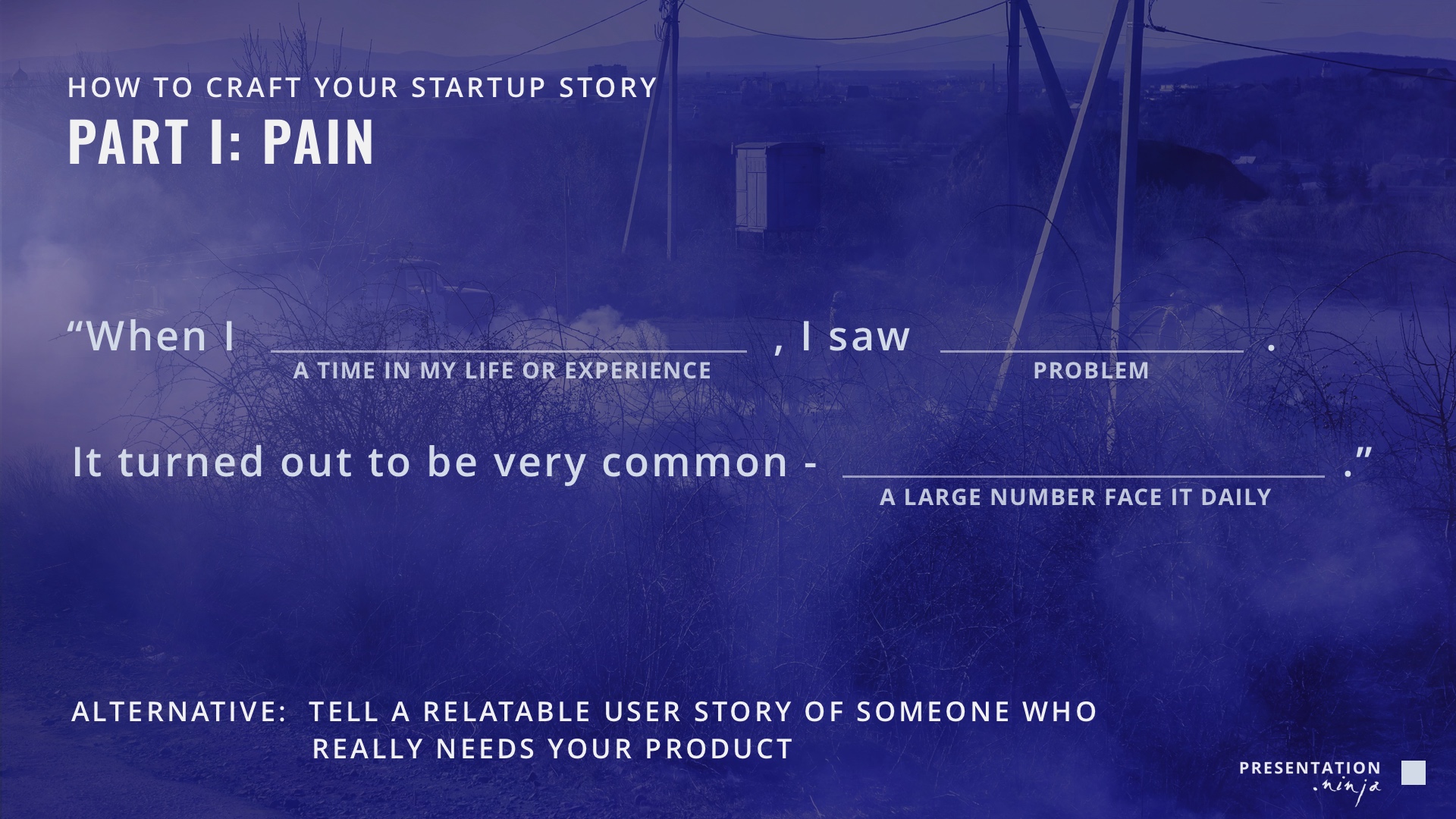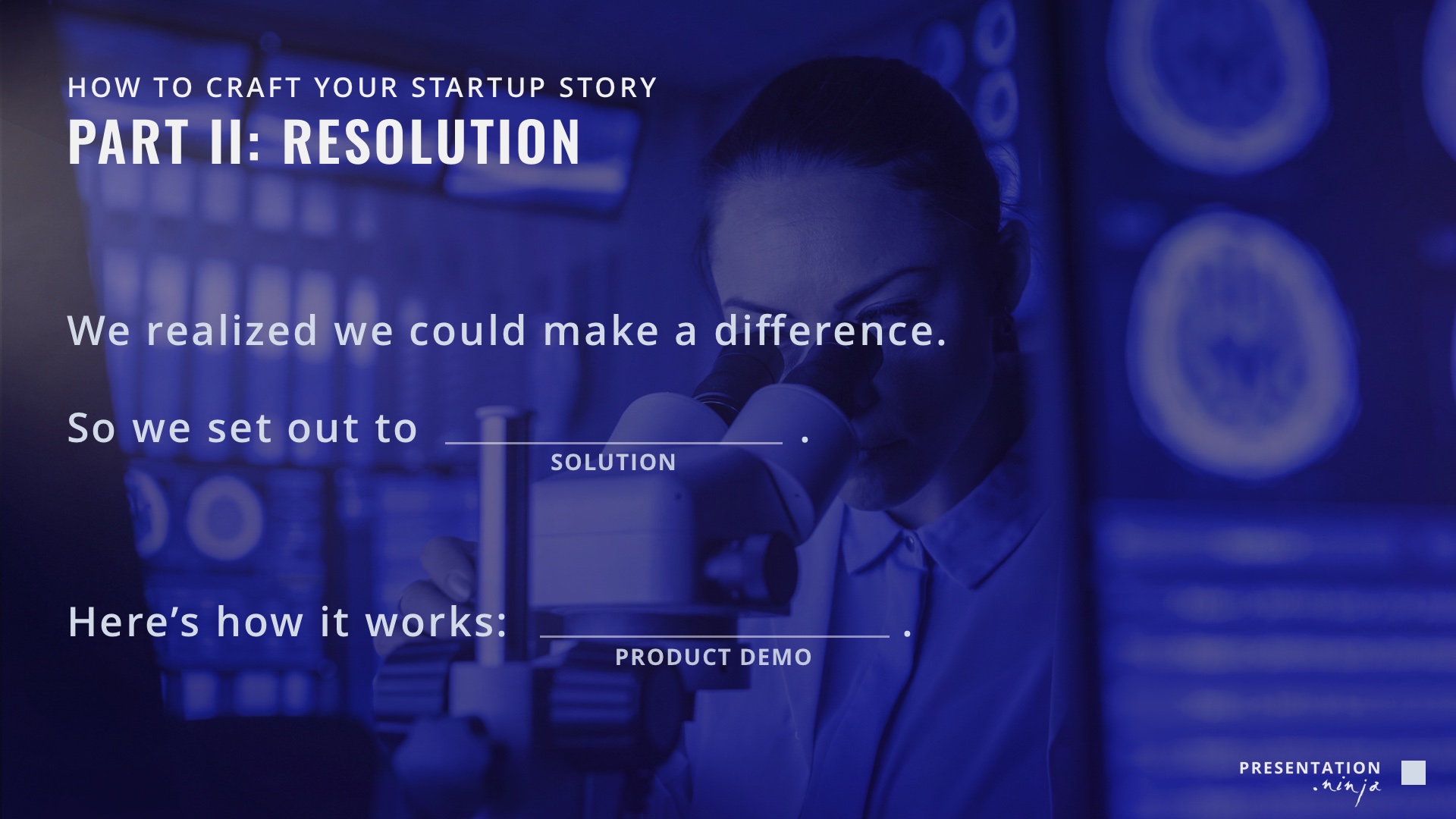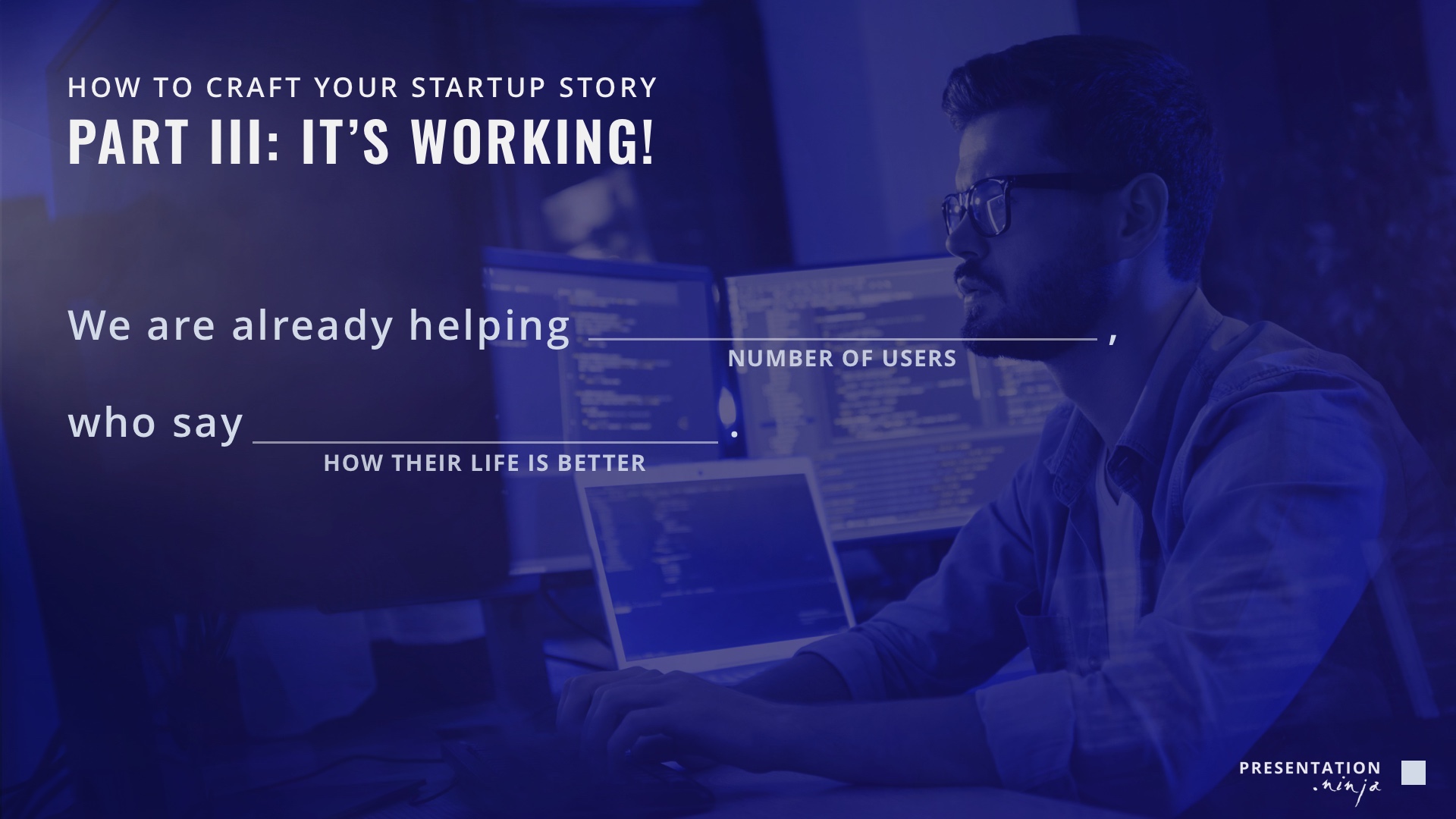Lullaby or action film?
or How to Tell a Startup Story
•
Investors want to know your problem is worth solving, if there's big money to be made, and if your team has it in you to pull it off. Now, let's build your story!

Through the eyes of an investor
Let’s hop into the classy shoes of your desired investor for a bit.
Pitch decks keep piling up in your inbox, sent in by leagues of hopeful founders.
Browsing through the decks, you see the same string of slides time after time:
PROBLEM • SOLUTION • PRODUCT DEMO • MARKET SIZE • BUSINESS MODEL • COMPETITION • TEAM • GO-TO-MARKET • TRACTION/REVENUE • FUNDING INFORMATION.
It can get a little bland sometimes.
But worse is when the decks have even less of a story than that.
And you have to scan through quickly to see if this company is worth it. Do they have a decent chance of making it big?
In your busy schedule, you can spend a minute or two scanning a deck before you decide if it’s worth looking into further.
That’s around 5-10 seconds per slide.
Did the deck pique your interest enough to book a chat with the founders?
Rise above the crowd
Now, hop back into your own boots. That was your presentation that just flicked on the investor's screen. Seen what you are up against?
You'll have to be pretty sharp to get the meetings you want, and the funding you are after.
What you need to do is to tell a business story that's easy to understand and follow, yet exciting for the investor. You want to pique their interest, and show some oomph, so they'll want to talk to you to find out more.
Your best bet is to take them on a pleasant ride: Give insights on where the world is heading, show why your business is called for right now, and showcase the tech or team that makes you unbeatable.
Then land them safely at the ask, tickled and a little high on adrenaline.
What do you mean, a story?
This is a question that seems to interest entrepreneurial-minded spirits a lot.
How DO you tell a story in business?
Stories are all Once upon a time and princesses and castles.
How would that apply to telling a story of why your technology matters?
A story of why your idea is big?
What you want to avoid is a lecture filled with technical features.
To you, of course, all that tech is exciting!
But you don’t always get that response.
Let's be realistic, we're not looking for film level storytelling here. The bar is far lower! So have no fear, let's just make sure you pass the bar.
You DO have to string together those items in a way that's easy to follow, and not too full of tech. (Yes, sure, build your pitch around those key items you’ve been told to include. Just weave them into sentences that flow smoothly from one to the next. Read on, I'll show you how.)
Here are your options:
There is a foolproof way to build a story that should help any startup.
But first, let’s begin with the gold. If your business is lucky enough to boast one of these items, bring it up front.
So. What is the kind of startup gold that smart money is looking for?
1
Unprecedented opportunity
If you are riding the waves on a BIG change, show the big picture:
How is the world changing? What big trends are there in technology or society, that are changing the way we live? That are changing the business landscape?
What opportunities does the change bring about?
Explain the unprecedented opportunities is your company tapping into, that your team is ideally suited to. With your technology, your business model, and the way you use them to solve a burning problem for the paying millions.
Show the opportunity that will now open up for your investor, if only they choose you, Pikachu.
Why now and why you?
Sure, the TEAM slide will list the your team's competencies.
But if your Chief Scientist slash Founder holds a patent or two that make it nearly impossible for others to compete, say that up front.
Don't wait a second longer!
2
The money is flowing in
If you can say your customers are loving it, and are opening their wallets month after month, that’s sweet for the ears of investors.
Here's how you create instant interest: Is your revenue growing fast? If you have it, show it. You have a proven business model, now you want to grow.
Start with that.
3
Got Thor’s hammer?
Are you doing AI? Data Science? Machine learning? Data Analytics? That's wonderful.
If you have a highly credible team, that can be a great start, and a great lure for investment.
The promise of a great key to a yet undiscovered lock can carry you some of the way with investors.
Especially if your hotspot field of scientific discovery seems to hold great business promise.
(It's called "deep tech" - for the science that's pretty deep.)
I followed the trajectory of an AI company from early on, as they started out from the lab where I was working as a researcher.
Zenrobotics - “The purveyors of fine robotic intelligence", by one of their quirky slogans - started out with a simple mission statement:
"Do something cool with robots"
To find their perfect business case, they offered consulting to test their unsupervised learning methods in a gazillion different fields.
Until they came across a problem that is perfect for developing cutting-edge robotic sorting in an unpredictable environment, that also makes business sense: Sorting recyclables from demolished buildings.
As said, if you have an exceptionally strong team, you may be able to pull this off, and get substantial funding before you have found an actual business case.
4
Show me the problem!
Okay, what if you don't have patents, no world-class researchers, and no revenue yet? In fact, you are just barely figuring out a business model.
The best bet for you is to try to identify a problem you could solve exceptionally well. One that people are willing to pay to get solved.
Basic business.
In fact, even if you begin with a brilliant tool or unique window of opportunity, identifying the main problem you solve will still lie ahead for you before your startup can turn into a revenue-based business.
So why not go ahead and begin with identifying your business problem.
Here's what transforming your "what we do" to "the problem that people would pay us to solve" could look like:
METHOD FIRST
Genetic testing for cancer markers.
PROBLEM FIRST
Preventing a very common cancer by early detection.
vs
Your core business story
All good so far?
Here's a method you can use to construct your story regardless of the stage of your business. Even if you started out with Thor’s hammer, phrasing your newfound problem this way may help you secure your next investment round.
If you can find an even more intriguing story, by all means do. You can add exciting details, refer to groundbreaking news, quote famous people, do a little stand-up gig. Show off your product à la Steve Jobs.
But if you are just starting out, here's what should be a relatively straightforward way to start building a story. A credible, easy-to-follow story that explains why you do what you do - and why it should be interesting to many.
Here we go!
I
The Pain
At its simplest, here is the main story you need to build: It’s a classic Problem-Solution storyline. These ingenious fill-in-the-blanks are picked and adapted from Brendan Baker (ex Angelist).
A great place to start is how you (or the founders) noticed an issue that touches a huge number of people, and realized you could fix it.
If you DIDN'T start with a problem, but instead with the cool new tools you have (“we want to apply the machine learning algorithms we just learned to call in Python, and make boatloads of money”), try to find a problem and present it as THE ONE.
Tell a relatable story of a user who would really benefit from your product. If your business helps fight climate change, show images of storms ravaging cities and causing human suffering that pains the heart of... your paying customer. (You do have to pay attention to who your revenue will come from.)
This is the CORE story for your business, because it explains the very thing you do, the most important problem you solve.
Here's an exercise to get you started.
Try filling in the blanks:

If it wasn't you behind the business idea, it may not feel right to talk in first person here.
In that case, consider talking as we - the company, including the founders.
Or you can always tell the story of someone we can all relate to.
Don't forget to identify: Who would pay for your solution? You should try to include their perspective in the story.
II
Resolution

How do you solve the problem, differently from what the world has seen before?
III
Users love it

Do you have a working product? Are your pilot customers happy beyond measure? Let the investors know you have traction. Here’s a phrase to get you started.
IV
We're going big

How is your go-to-market strategy working? Are you are gaining users, getting great partnerships, or found a brilliant method low-cost acquisition? Show off your foremost successes here, and show where you are headed.
Got a problem?
Hidden in this story format is a key takeaway: Find your PROBLEM. Because - ultimately, the investors will be interested in problems solved, because that’s how money is made.
Even if you didn’t start with a problem - if you are still wielding the set of tools or technology for different client cases - it can be very helpful to identify one. Pick the the most relatable problem, the one with the most money sloshing around it, the most promising one, and start your pitch with that.
String them together
You can place these fill-in-the-blanks storylines one after the other, and it will already make sense. Then, smooth over the seams if needed, and decorate to match your taste.
Done!
One more thing:
Get feedback
Chosen your story?
Pick it, craft it, and test it.
Do they look excited, interested?
...or hesitant, and then lost?
You'll know what to keep, and what to keep working on.
Agree? Disagree? Want help with your deck? Message me anytime at hello@presentation.ninja
